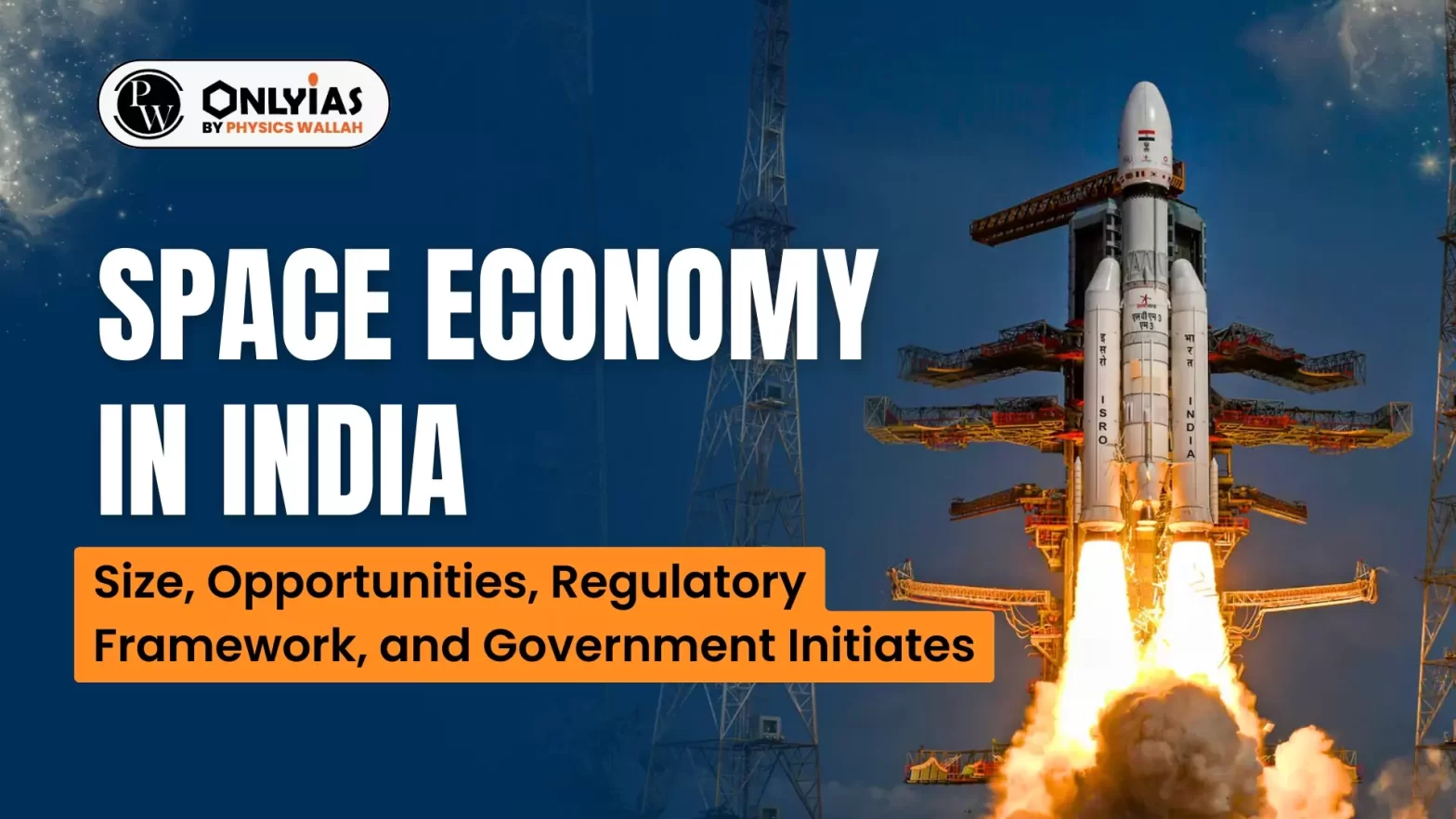
According to a recent report from the World Economic Forum (WEF), the global space economy will reach a value of $1.8 trillion by 2035, nearly identical to the scale of the world semiconductor industry.
| Relevance For Prelims: Indian Space Sector, SPACE & SPACE TECHNOLOGY, India Allows 100% FDI In Indian Space Sector, Indian Space Policy 2023, Privatization Of Indian Space Sector, and Space Centres & Indian Space Agencies.
Relevance For Mains: Space Economy in India: Size, Opportunities, Regulatory Framework, Government Initiates. And Way Forward. |
|---|
Space Legislation in India
Regulatory Framework for Space Activities in India
|
|---|
IN-SPACe, an independent autonomous agency under the Department of Space (DOS), unveiled its decadal vision and strategy for the Indian space economy.
|
|---|
| Prelims PYQ (2018):
With reference to India’s satellite launch vehicles, consider the following statements: 1. PSLVs launch the satellite useful for Earth resources monitoring whereas GSLVs are designed mainly to launch communication satellites. 2. Satellites launched by PSLV appear to remain permanently fixed in the same position in the sky, as viewed from a particular location in Earth. 3. GSLV Mk III is a fourstaged launch vehicle with the first and third stages using solid rocket motors; and the second and fourth stages using liquid rocket engines. Which of the statements given above is/are correct? (a) 1 only (b) 2 and 3 (c) 1 and 2 (d) 3 only Ans: (a) |
|---|
| Mains Question: In order to enhance the diffusion of space technology and boost space economy, opening up the Indian space sector for the private sector is important. Comment. (15 Marks, 250 Words) |
|---|
| Must Read | |
| NCERT Notes For UPSC | UPSC Daily Current Affairs |
| UPSC Blogs | UPSC Daily Editorials |
| Daily Current Affairs Quiz | Daily Main Answer Writing |
| UPSC Mains Previous Year Papers | UPSC Test Series 2024 |
To get PDF version, Please click on "Print PDF" button.
SC Verdict on Newsclick Shows Adherence to Due Pro...
Stay Invested: On Chabahar and India-Iran Relation...
Credit Rating Agencies, Impact on India’s De...
Catapulting Indian Biopharma Industry
Globalisation Under Threat, US Import Tariffs Have...
Global Report on Hypertension, Global Insights and...
<div class="new-fform">
</div>
